Unless you’ve been living in a cave for the past 20 or 30 years, you’re probably already familiar with paracord. Even if you aren’t a prepper yourself!
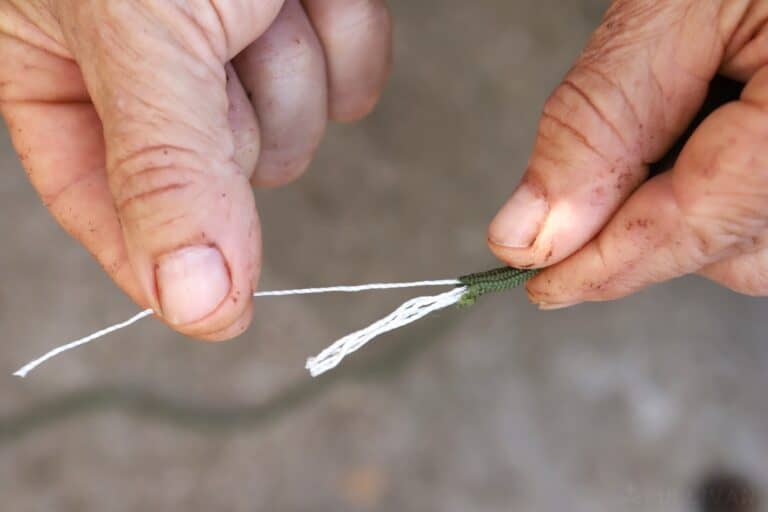
This military-issue parachute cordage has firmly established itself as the go-to choice for making gear modifications, carrying cargo, improvising tools and shelter, making wearables, and even just decorative use thanks to its nearly unbeatable combination of strength, durability and affordability.
But even if you’ve been working with paracord for a while, you might be surprised to learn that it’s not a universal item: there are many different types of paracord, some of them bearing official ratings and others not. As you might guess, some types of paracord are way, way more capable than others!
Learning which is which and picking the right kind for your application is critical for success and safety. I hope you to that, I’m bringing you an in-depth guide to the ubiquitous paracord. Grab your fid and lighter, and let’s get to it…
What is Paracord, Exactly?
If you aren’t familiar with the actual technical specifications of Paracord, it’s worth reviewing them here before we go on. Some folks think that any lightweight, nylon cord is paracord, but that’s just not the case.
Paracord, strictly speaking, is a light, kernmantle nylon rope. Don’t let that nomenclature throw you off: kernmantle simply refers to any kind of sheathed rope where the inner strands or yarns, also known as kerns, are protected by a woven exterior sheath.
It’s the inner strands that give it its strength, while the outer sheath prevents abrasion, protects from friction, and ensures that the strength supplied by the inner strands is consistent.
If you want to play fast and loose, you might say that any such nylon cordage that meets this construction specification is paracord, and indeed there are tons of products on the market that are advertised and sold accordingly.
However, when most folks are referring to paracord they have a specific type in mind, what is known as Type III or 550 cord.
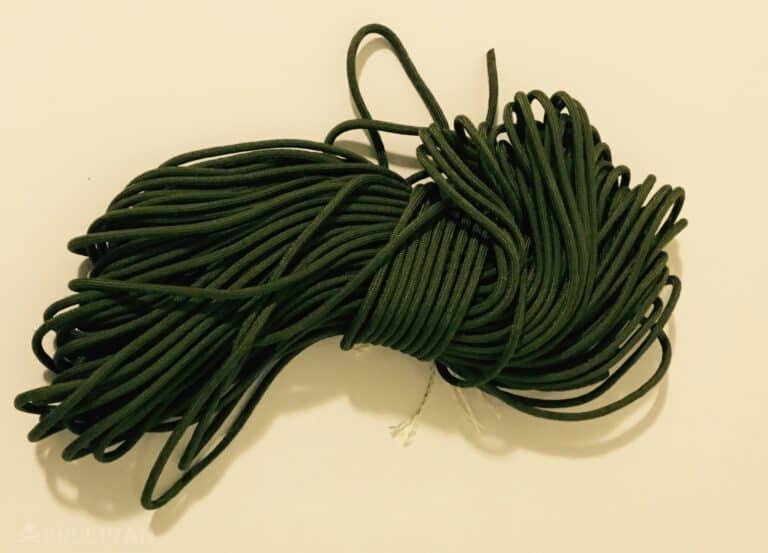
This military specification cord consists of between 7 and nine 3-fiber strands surrounded by a nylon sheath made of 32 individual nylon fibers that yield a minimum breaking strength of 550 lbs, hence the common name, 550 cord.
Keep these specs and construction style in mind when we get to the section on the different official and non-official types of paracord. You’ll see what a difference it can make!
What is Paracord Made From?
Paracord, true paracord, is made from nylon, both the inner strands and the outer sheath.
However, today with the market on paracord exploding and showing no signs of slowing down you’ll find different varieties of materials used to construct, each with its own advantages and disadvantages.
Most commonly, the outer sheath of any kind of paracord is made from nylon, but some varieties use inner strands made from natural fibers or even fine, metal wire or monofilament for survival purposes.
Not All Paracord is Made to the Same Standard!
One last thing before we get to the directory of paracord types, and this is a really important point: not all brands are made the same or to the same specification, even if they advertise themselves as a type of cord with a known set of standards.
Unfortunately, as is often the case with products that originated in the military, lots of makers have made a total miscarriage of the term “mil-spec”.
As detailed above for the type III paracord that most folks know and love, there are plenty of fly-by-night commercial makers out there that produce paracord made from non-specified materials, using fewer internal strands, even fewer yarns-per-strand, and sometimes even inferior sheathing.
This can lead to dangerous results if you are counting on a cord rated for 550 lb. of breaking strength and instead discover, too late, that it breaks under a far lighter load…
Likewise, some manufacturers exceed the specifications and sometimes dramatically so, producing a cord of the same diameter that is even tougher and stronger than the military original kind made by OEM suppliers.
Often, these enhanced paracords will have a unique name or indicator for their greater performance, but not always.
The point is that you must vet the supplier of your paracord and not just the product itself. Counterfeiting and outright lies are rampant in this sector, sadly.
I highly advise you only buy directly from trusted suppliers for this reason, and even test any paracord that might be trusted for securing valuable gear or for protecting life and limb.
With that said, let’s get to the types so you can start making sense of what’s what out here in the world of paracord…
Mil-Spec Paracord
| Type | Core Strands | Breaking Strength, lbs | Notes |
| I | 1 | 95 | Light duty |
| IA | 0 | 100 | Light duty |
| II | 4 to 7 | 400 | Medium duty |
| IIA | 0 | 225 | Light duty |
| III | 7 to 9 | 550 | Medium duty |
| IV | 11 | 750 | Heavy duty |
The following classifications of paracord adhere to mil-spec, and specifically the specification of technical standard MIL-C-5040H, which is no longer official though still commonly referred to by manufacturers of such cord.
If you buy any of the following types from a trusted manufacturer like E L Woods Braiding Company or Titan Survival you can count on them to do exactly what the specs say they will.
Type I
The lightest and thinnest of the official paracord specifications, type I or 95 cord has a single internal strand protected by a sheath made out of 16 individual nylon fibers. As the moniker suggests, it has a minimum breaking strength of 95 lb.
Type IA
More of a variation on type 1 core than a distinct type, type IA has no core, a 16-fiber sheath, and is rated for a minimum breaking strength of 100 lb. This is accomplished by using a slightly heavier nylon fiber for the sheath which comprises the entirety of the cord.
Type II
Type II, also known as 400 cord for its 400 lb breaking strength, has anywhere from 4 to 7 inner strands protected by a sheath made of 32 or 36 individual nylon fibers, depending on the manufacturer.
Type IIA
Type IIA, also known as 225 cord, has a 225 lb breaking strength, no core strands and a sheath that makes up the entirety of the cordage consisting of 32 or 36 individual nylon fibers.
Type III
This is the granddaddy, the one we all know and love. Type III cord, also known as 550 cord, has a minimum breaking strength of 550 lb, 7 to 9 interior strands and a sheath made of 32 or 36 nylon fibers depending on the manufacturer. It is all so noted for its extreme strength-to-size ratio.
Type IV
The beefiest of the official paracord variations, type IV or 750 cord has a substantially strong 750 lb tensile strength, made possible by 11 interior strands and an exterior sheath made of 32, 36 or 44 nylon fibers.
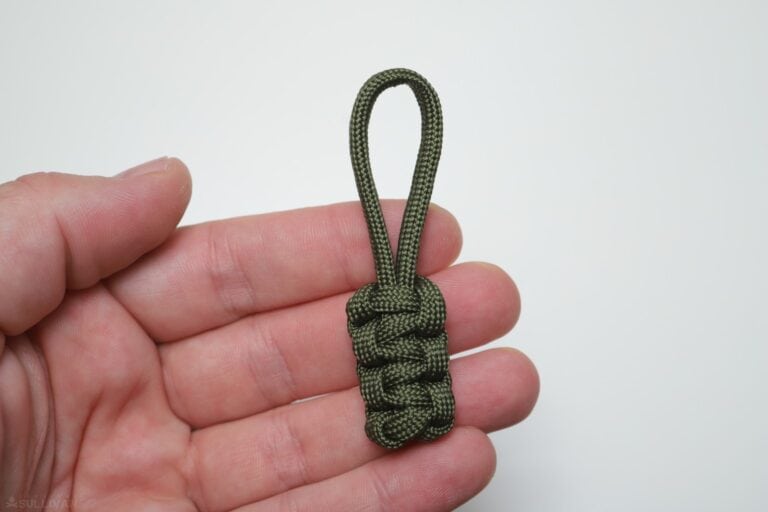
Commercial Paracord
| Type | Core Strands | Breaking Strength, lbs | Notes |
| Shock Cord | 12 | 100 | Light duty, elastic |
| Nano Cord | 0 | 35 | Light duty, breaks easily |
| Micro Cord | 0 | 100 | Light duty |
| 850 Cord | 8 | 850 | Heavy duty |
| ¼” Para-Max | 3 | 1,200 | Heavy duty |
| Dyna-X | 3 | 1,250 | Heavy duty |
| Battle Cord | 7 | 2,650 | Heavy duty, exceptionally strong for diameter |
The following types aren’t genuinely, truly paracord- at least if you go only by the military specifications set down in the previous section!
Nonetheless, they are common, popular and used in all the same ways that genuine article paracord is, and some of them greatly exceed what the original military types are capable of in various regards.
Shock Cord
Shock cord, sometimes referred to as bungee cord, is a small diameter elastic cord that uses 12 inner strands for strength, though it has a minimum rated breaking force of only 100 lb. Still, it is very useful for situations where elasticity and extreme flexibility is needed.
Nano Cord
Nano cord is the smallest diameter type of woven cord that’s recognizably in the paracord family, with a diameter of just 3/100 of an inch!
It has a list of breaking strength of only 35 lb, meaning it is only good for very light-duty applications, but its slenderness and flexibility makes it useful for many delicate or detailed tasks where sensitivity and agility are paramount.
Micro Cord
Micro cord is only slightly larger in diameter compared to nano cord, measuring 5/100 of an inch, but it is significantly stronger though not as flexible. It has a tensile strength of 100 lb.
850 Cord
You might think of 850 cord as the beefy bigger brother to the traditional paracord types from the previous section. Using 8 multi-thread internal strands and the same type of woven sheath as other paracord types, it yields a superior breaking strength of 850 lb.
¼” Para-Max
Thick, stout and relatively inflexible, ¼” para-max cord uses just 3 proportionally thick inner strands and a heavy duty woven mantle to yield a phenomenal breaking strength of 1,200 pounds.
It’s difficult to weave into complex shapes owing to its thickness and relative rigidity but it is great for serious tasks.
Dyna-X Cord
Dyna-X cord is one of the most popular commercial paracord types, though it deviates pretty radically from the design specifications of the original, smaller diameter paracord varieties.
With just 3 thick inner strands and a proprietary woven exterior sheath it can provide 1,250 lb. of tensile strength while itself measuring just slightly larger than an ⅛ of an inch in diameter.
Battle Cord
Without question the toughest and strongest commercial paracord variety on the market, battle cord really does live up to its name by providing an unbelievable 2,650 lb of tensile strength while measuring less than a quarter inch in diameter.
It accomplishes this by using the best and strongest materials for its 7 interior strands and sheath. Expensive, but worth it if you are using your paracord for real deal, life-and-death purposes.
Is Mil-Spec Cord Always Stronger than Commercial Cord?
As we can see from the selections of paracord types above, not always. However, this assumes that the advertised breaking strength of any given variety is factual and dependable under real-world use.
I myself have investigated and experimented with plenty of commercial paracord types, particularly the old standby 550 cord, that were nowhere close to specification in terms of construction or performance. Caveat emptor, readers!
However, if you are buying a non-mil-spec cord from a supplier or manufacturer with an earned reputation for performance and trust, you’ll be able to depend on it exceeding what military paracord can do. Of course, if it’s your life and outcome on the line, you should test it yourself.
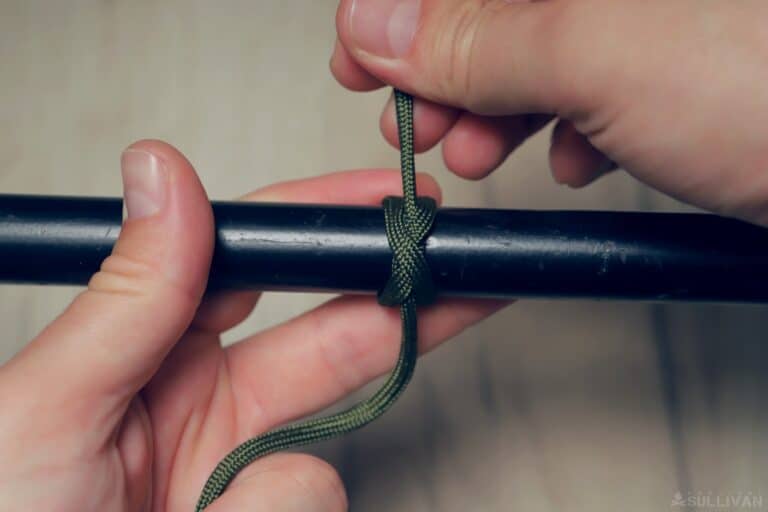
How Can You Assess the Load Performance of a Known or Unknown Paracord?
The only way to get vetted scientific data concerning the performance of paracord is to send it to a materials testing laboratory for a battery of tests, including tensile strength, abrasion, and more. This way you’ll be able to get the real story concerning what your cord is, and more importantly is not, capable of…
The problem is, this testing can take a while and is naturally quite expensive to commission, especially for a small quantity. You might have luck if you have a large university in your town or region as they might be able to help you for pennies on the dollar.
Of course, if all you’re worried about is what load your paracord can support, this is fairly easy to test yourself by rigging up a length of the cord on a strong anchor point and then attaching a known quantity of weight to it, and seeing if the cord can suspend it at a dead hang.
You can use a hand-cranked or powered winch or hoist for the job, and a series of large barbell weights…
Simply tie a sturdy dowel at one end of the cord, thread the length through your weights and then make a bowline at the far end before attaching it to your hoist or anchor point. Then hoist away and see what happens.
Pay attention to make sure that it is not your knots that fail before the cord itself does. And no, this testing protocol isn’t super scientific but generally adequate for sussing out if your chosen brand of paracord can or cannot do what it claims it can.
Picking the Right Cord
Like I said up above, not all paracord is created equal. Even if you know you’re dealing with quality stuff, if you’re going to try to make a survival raft or rescue rig for abseiling out of nano cord, you’re going to be in for a very bad time.
Likewise, using battle cord or ¼” para-max cord for simply tethering something to your pack or making a zipper pull is going to be a waste of expensive material, and likely far too chunky to boot.
While we could delve deeply into the unique specifications, advantages and disadvantages of every type of cord on the market, this isn’t necessary unless you’re a nerd about cordage: for most purposes it is enough to group them into light duty, medium duty and heavy-duty varieties.
Light Duty – Types I, IA; Shock Cord, Nano Cord, Micro Cord
Light duty cord types are ideal for making necklaces, zipper pulls, lanyards, basic improvised tools and weapons, and impromptu repairs.
It’s also excellent for making handle wraps, mats, and other goods or enhancements that won’t add much girth or thickness to the surface they are used on.
Most of these types are small, light and thin enough to also be useful for making small game traps, as fishing lines, for sewing, and other purposes.
And, make no mistake, they’re also sufficient for quickly crafting a shelter, hanging gear from a branch to get it off the ground for drying and other utility tasks. But, they will be put to a significant test if they have to hold human body weight, deal with high wind or other such circumstances.
The lightest types of cordage in this category are also ideal for making breakaway lanyards, with nano cord being especially recommended.
If you don’t have buckle or other attachment point that you know will fail if it gets snagged, you can count on being able to quickly break or tear away some paracords in this class
This is crucial to keep in mind if you’re climbing, doing urban exploration or any sort of water crossing where snag hazards abound.
In short, if you aren’t going to be using it hard or abusing it, and you aren’t trying to suspend people or gear in any sort of situation that might imperil either, they are a good choice and tend to be cheap, easy to carry and lightweight.
Medium Duty – Types II, IIA, III
Paracords in this category are great all-arounders capable of doing everything pretty well…
They work wonderfully for lashing, assembling shelter, or even improvised vehicles like rafts, sledges, and things like snowshoes, and can just as easily be put to use for jewelry like bracelets, necklaces, keychains, wraps, and more.
They also work well for making snares and traps for larger animals, though they’re generally too heavy and tough to work well for small game or as fishing line.
However, one old survivalist trick that continues to work well is slicing open these heavier cords to extract the still-tough, but individually much smaller, inner strands for such duty.
Paracord varieties in the medium-duty category provide an ideal combination of strength to weight, and although they’re never prescribed for things like climbing or rescue work, you should know that it has been done successfully in the past during dire emergencies.
As such, having a thorough working knowledge of the correct techniques and methods for fashioning improvised harnesses and handholds makes a big difference.
I would say that if you get no other type, make it a point to get a paracord in this category and you can cover most of your bases when it comes to contingencies.
Heavy Duty – Type IV, 850 Cord, ¼” Para-Max, Dyna-X, Battle Cord
Heavy duty grades of paracord are getting into what I call “compact rope” territory: they are certainly strong enough for lashing down modestly-sized (read: man portable) cargo, especially when you use multiple strands.
You can even rely on them to safely support human body weight for climbing, extraction and rescue duties, though once again, this is not a manufacturer recommended or approved use for them.
It’s worth noting that pretty much every type of cord on the market that belongs in this category is a commercial spec, with the exception of type IV and it is among the least capable by comparison.
They can also provide you the ultimate in strength and security if you’re creating a shelter or hammock in a high-wind environment, hoisting heavy gear or other materials and doing countless other tasks where strength matters more than anything.
The major downside, obviously, is the thickness and relative inflexibility of these cords that makes creating intricate knots and other shapes more difficult, especially when they get cold.
However, they tend to be far more resilient to damage, especially abrasion, and can be used over and over again with little concerns over damaging or degrading (as long as they’re given even a little bit of care and protection).
For most common tasks that call for paracord, these varieties are almost certainly overkill and they tend to be quite expensive on a per-foot basis, but only if you really need this sort of strength and certainty accept no substitutes.
No Paracord is Invincible!
One last thing you should know about paracord, commercial or military spec alike, is it no matter how good it is, it isn’t invincible.
Paracord has a rightly deserved reputation for extreme strength and toughness, and being able to stand up to the worst environmental conditions, but it still has the same fundamental vulnerabilities of all rope and cordage.
Make it a point to protect your paracord from the following, and remember that if it gets compromised or badly degraded its breaking strength will go down!
Moisture: paracord can shrug off incidental exposure to water, and it dries out readily and quickly, but it will always weaken it to a degree and extended exposure can seriously compromise its structural integrity.
Think twice before using paracord for heavy load bearing if you know it has gotten wet before.
UV: ultraviolet energy from the sun can degrade almost anything in time, and synthetic fabrics like nylon, which is used to make paracord, are especially susceptible.
Still, paracord has been engineered to resist long-term UV exposure while staying strong, but you should make it a point to keep it shaded whenever possible if you want it to last.
Heat: warmth is no problem for paracord, and even the scorching temperatures of the desert won’t affect it.
However, intense heat from a fire, a hot engine, or any other similar source can cause it to melt and become brittle or break entirely. Consider any paracord that has been exposed to open flame in total to be destroyed.
Mold: mold is an insidious antagonist of many fabrics, even synthetic ones like nylon. Mold will often accompany moisture, especially if the paracord was dumped in a natural water source that is swimming with microscopic life.
The presence of a mold is a red flag, as it will steadily break down the guts of the cord as well as the sheath.
Abrasion: abrasion is highly problematical for all types of cordage and rope, but also a fact of life if it is going to do work.
If you’re using your cord as a pulley, for hoisting gear, towing, or securing cargo do everything that you can to protect it from abrasion and check it regularly. When the sheath is compromised, those fine inner strands will break in no time.
Chemicals: harsh chemicals can weaken or dissolve the nylon of paracord outright.
Common culprits in this category are gun cleaning chemicals as well as certain kinds of oil, heating and lantern fuel and other combustible liquids commonly used by preppers and campers. Keep your paracord well away from the stuff, including the vapors!
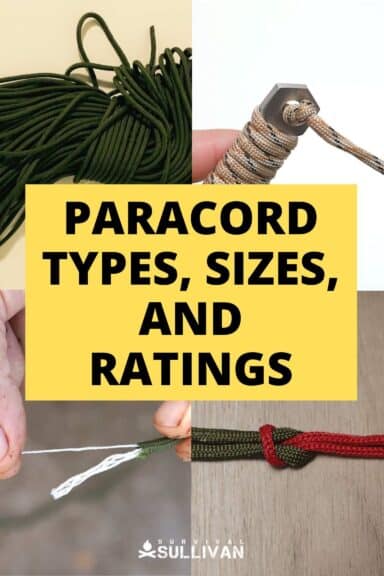

Tom Marlowe practically grew up with a gun in his hand, and has held all kinds of jobs in the gun industry: range safety, sales, instruction and consulting, Tom has the experience to help civilian shooters figure out what will work best for them.
